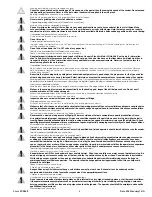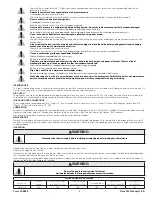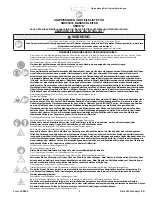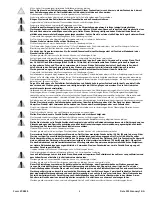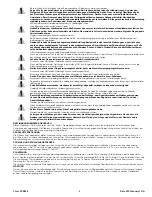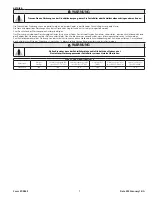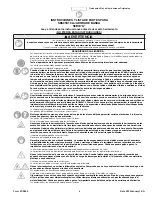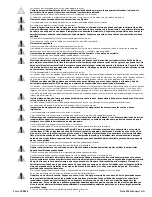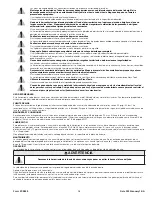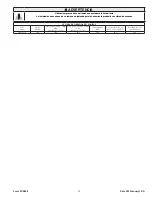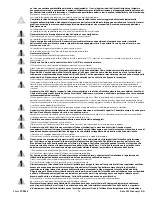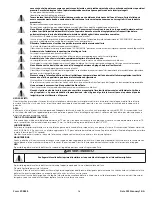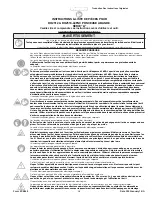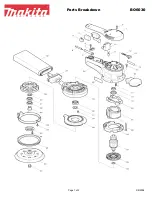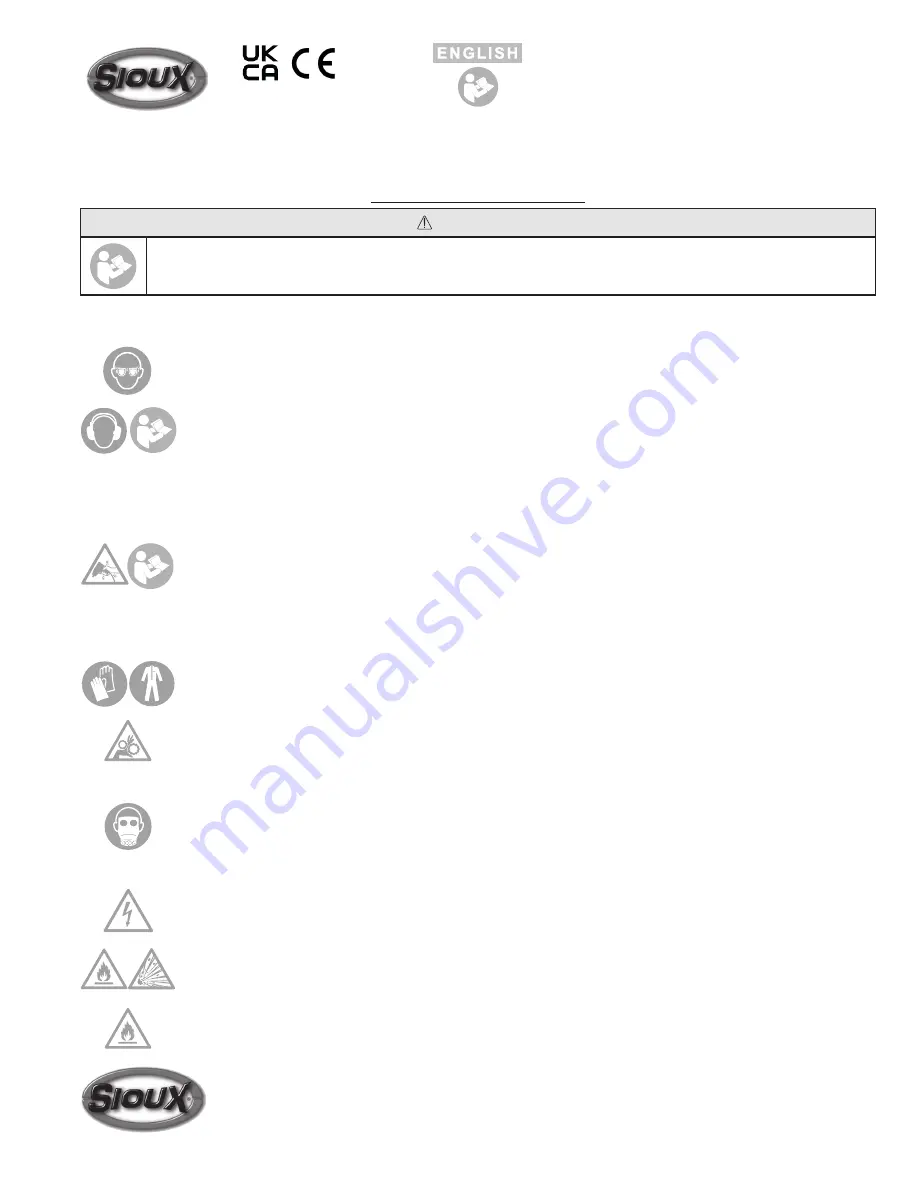
Form ZCE868
1
Date 2022January14/A
Form ZCE868
Date 2022January14/A
Page 1 of 32
INSTRUCTIONS & PARTS LIST FOR
SBS05S18 BELT SANDER
SERIAL“A”
SAVE THESE INSTRUCTIONS!
SANDER SAFETY
Sioux power tools may contain chemicals known to the State of California to cause cancer, birth defects, or other reproductive harm. Do
not modify this sander. Modifications can reduce the effectiveness of safety measures and increase the risks to the operator.
Power tools can cause flying particles.
Proper eye protection must be worn at all times by tool user and bystanders. The grade of protection required should be assessed
for each use. Be aware that failure of workpiece or accessories, even of the inserted tool itself can generate high velocity projectiles.
Flying particles can cause eye injury.
Power tools generate noise.
Ear protection must be worn when tool noise level exceeds 85 dBA. We also recommend that ear protection be worn when the
tool noise level is below 85 dBA. See the tool’s information sheet for the noise level. Use hearing protection in accordance with
employer's instruction; and as required by occupational health and safety regulations. Appropriate controls to reduce the
risk can include actions such as damping materials to prevent work pieces from ringing. Operate and maintain the sander
or polisher as recommended in instruction handbook, to prevent an unnecessary increase in the noise level. If the sander or
polisher has a silencer, always ensure it is in place and in good working order during operation. Exposure to high noise levels
can cause permanent, disabling hearing loss and other problems, such as tinnitus (ringing, buzzing, whistling or humming in
the ears). Therefore, risk assessment and implementation of appropriate controls for these hazards are essential
Prolonged exposure to noise can cause hearing loss.
Power tools vibrate.
Excessive vibration can cause injury. If numbness, tingling, pain or whitening of the skin occurs, stop using tool and consult
a physician. See the tool’s information sheet for the vibration level. For concerns regarding atypical use, consider that the
vibration standards listed in this document reflect normal use as indicated by ISO11148-8:2011. Additional risk management
should be performed to ensure the safety beyond the scope of normal use. Exposure to vibration can cause disabling damage
to the nerves and blood supply of the hands and arms. Operate and maintain the sander or polisher as recommended in the
instruction handbook, to prevent an unnecessary increase in vibration levels. Hold the tool with a light but safe grip, taking
account of the required hand reaction forces, because the risk from vibration is generally greater when the grip force is higher.
Prolonged exposure to vibration can cause injury.
Sanding belts can cause cuts and abrasions.
Keep hands and other body parts away from sanding belts to prevent cutting or pinching. Wear protective clothing and gloves to
protect hands.
Contact with rotating sanding belts can cause injury.
Sanders present a risk of entanglement.
Keep loose hair away from power tools and accessories. Keep hands away from moving parts of the tool and accessories.
Do not wear jewelry, loose clothing, or neckwear around power tools. Keep work area clear of cleaning rags and all items that
could become entangled with the tool. Ensure that the workpiece is securely fixed. Hold the tool with a light but safe grip, taking
account of the required hand reaction forces, because the risk from vibration is generally greater when the grip force is higher”
Entanglements can cause injuries.
Sanding operations create dust.
Do not breathe sanding dust. Use approved mask. Risk assessment should include dust created by the use of the tool and the
potential for disturbing existing dust. Operate and maintain the sander or polisher as recommended in these instructions to
minimize dust or fumes. Direct exhaust so as to minimize disturbance of dust in a dust-filled environment. Where dust or fumes
are created, the priority shall be to control them at the point of emission.
Breathing sanding dust can cause injury.
This tool is not insulated for contact with electric power sources.
Do not use near live electric circuits. Be aware that there may be hidden electric wires. There is a risk of electrostatic discharge
if sanders are used on plastic or other nonconductive materials.
Electric shock can cause injury.
This tool is not intended for use in a flammable or explosive atmosphere.
Do not use this tool in a flammable or explosive atmosphere. Ensure that there are no electrical cables, gas pipes, etc., which can
cause a hazard if damaged by use of the tool.
Explosions and fire can cause injury.
Sanding metals creates sparks that can ignite flammable materials and vapors.
Only sand metals if the area is free of combustible or explosive materials or vapors. Potentially explosive atmospheres can be
caused by dust and fumes resulting from sanding or grinding. Always use dust extraction or suppression systems which are
suitable for the material being processed. The priority to eliminate dust and fumes is to control them at the point of emission.
Explosions and fire can cause injury.
Original
Instructions
250 Snap-on Drive • Murphy, NC 28906 • USA • Phone: 828-835-9765 •www.siouxtools.com
WARNING
When used improperly power tools can create hazardous situations.
Everyone using, maintaining, changing accessories or working near this tool must read, understand and follow these Safety Instructions!
Improperly used power tools can cause injury or death.
Read and understand these instructions before operating this tool.


